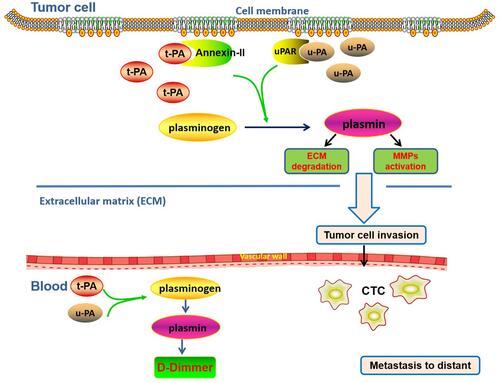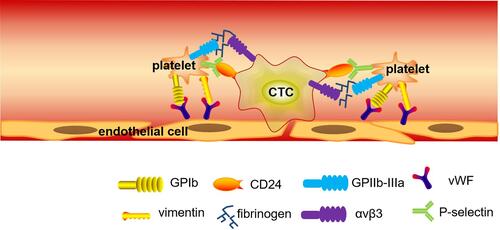Figures & data
Figure 1 The diagram of the plasminogen activator system associated with local invasion and distant metastasis in pancreatic cancer. In this system, t-PA and u-PA are overexpressed in tumor cells; (t-PA)-(annexin II) binding and (u-PA)-(u-PAR) binding can both activate plasminogen to plasmin, which in turn activates MMPs and ECM degradation; the resulting proteolysis of ECM frees the cells from their original site allowing cell invasion, which is manifested as metastasis at distant sites via CTC migrating to the blood system; high concentration of D-dimer in plasma is an essential accompaniment of CTCs.

Figure 2 The diagram of the aberrant coagulation system associated with the anchoring and adherence in pancreatic cancer. In this system, platelets express a number of cell-surface receptors for adhesion and aggregation, including the GP Ib-IX-V complex and vimentin for vWF binding, the GP IIb-IIIa integrin for binding to fibrinogen and fibronectin, and the P-selectin for binding to CD24 on CTCs, supporting their adherence to endothelial cells, thus causing thrombosis and metastasis in pancreatic cancer; Fibrinogen acts as a “molecular bridge” between specific receptors on CTCs and the vascular endothelium or adherent platelets and leukocytes to promote cell metastasis.

